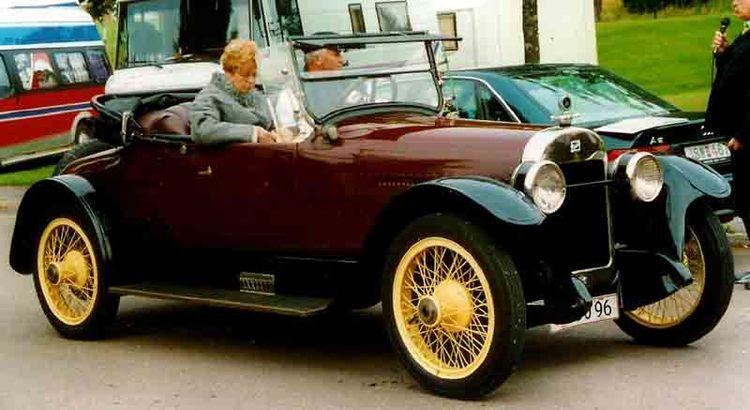 | ||
The Buick Master Six was an automobile built by Buick from 1916 to 1929, and shared the GM B platform with the Oldsmobile Model 30. It was powered initially with a Buick Straight-6 engine, later upgraded to a Buick Straight-8 engine with multiple bodystyles, using the newly established GM B platform designation in 1926.
It was Buick's high-end offering, above the Standard Six. It was also manufactured from knock-down kits at GM's short-lived Japanese factory at Osaka Assembly in Osaka, Japan. It was an all-new platform joining the smaller Model 10, and was replaced by the Buick Series 50, and the Buick Series 60.
Starting in 1916, when this generation was introduced, it was known by a designation that changed yearly. It began as the Series D, followed by E, H, and K. Beginning with 1921 until 1924, it changed to Series 21, denoting the year, to Series 24 (for 1924). Beginning with the letter designations, the Series D had additional numeric designations for the body style, 44, 45, 46, and 47, designating touring car, roadster, sedan, and coupe. The Series E, H, and K continued using the numeric designations for body styles but added additional designations for longer wheelbases and bodywork (44, 45, 46, 47, 49, 50). The numbered series vehicles added additional body styles called Pullman Saloon, Country Club, and Town Car, adding numeric designations (54, and 55 for 1922, 41 for 1923). The year 1924 continued to use the previous numeric designations without any changes.
Starting with 1925, the series designation changed back to numeric designations, but this time they signified the wheelbase used (120, 121 and 129).
The Master Six was also sold with a smaller vehicle, called the Standard Six, later the Series 115, and Series 116. They were replaced with the Series 40.
